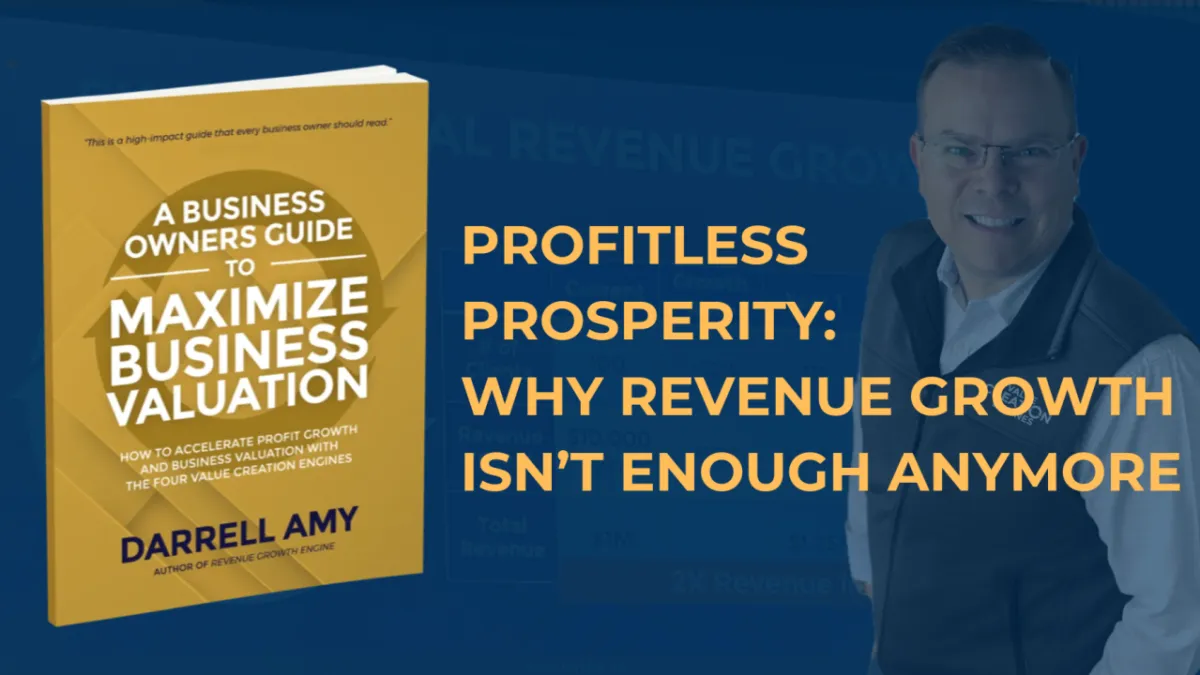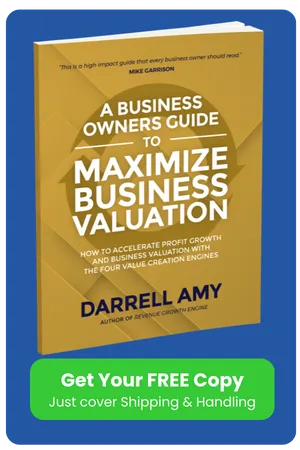
Profitless Prosperity: Why Revenue Growth Isn’t Enough Anymore
The recent ITR Quarterly Economics report flagged a troubling economic trend: Profitless Prosperity. It describes a scenario where companies continue to grow their top-line revenue while bottom-line profits remain flat—or even decline. At first glance, it seems counterintuitive. But as business owners, we know that growing revenue doesn’t always translate to growing value.
This emerging risk is being driven by a convergence of rising costs: labor, imports, capital, and energy. All of these are being further amplified by demand surges in AI infrastructure and automation. As these pressures mount, companies who focus solely on increasing revenue without addressing margins may find themselves running faster but going nowhere.
In this kind of economic climate, midmarket companies—those generating $10 million to $100 million in revenue—are especially vulnerable. They have scale, but often not the margins or operational discipline of larger enterprises. And they certainly don’t have the luxury of being inefficient.
So what can leaders do to avoid the trap of profitless prosperity? Here are five strategic actions you can take right now:
1. Be Proactive in Strategic Planning
The days of setting strategy once a year and coasting are long gone. The pace of change today requires a dynamic and proactive planning rhythm. Companies that establish a quarterly strategic cadence—reviewing financials, assessing risks, and recalibrating priorities—are far better positioned to navigate volatility. Strategic planning is no longer an annual event. It’s a leadership discipline.
2. Pay Close Attention to Profitability
Revenue is important. But profitable revenue is what drives valuation. It’s time to get granular. Understand the profitability of each business unit, product line, and customer segment. In times of inflation or supply chain disruption, it’s easy for rising costs to sneak past outdated pricing models or bloated operations. Precision and accountability in financial reporting are critical. As Peter Drucker said, “What gets measured gets managed.”
3. Lean Into Competitive Advantage
Now more than ever, you need to double down on what makes your company different—and valuable. Whether it’s a unique customer experience, proprietary process, or niche expertise, your competitive advantages are your moat. Build your strategy around them. Communicate them clearly to your team and your market. Protect them fiercely. In an era of commoditization, differentiation drives margin.
4. Apply Technology to Drive Operational Efficiency
One of the most powerful levers you have is technology. AI and automation tools are creating incredible efficiencies across nearly every business function—from customer service and sales to logistics and finance. But don’t just chase shiny objects. Focus on practical technology investments that streamline workflows, reduce manual effort, and free your team to focus on high-value tasks. Efficiency isn’t just about cost savings; it’s about creating more capacity for value-added work.
5. Develop a Pricing Strategy
Too many companies treat pricing as a one-time decision or a reactive adjustment. In this environment, you need a proactive pricing strategy. That means understanding your value proposition, staying in tune with market shifts, and training your team to sell based on outcomes, not discounts. Pricing is a strategic function. Handled correctly, it can be a key driver of profitable growth.
Why Valuation Is the Ultimate Scoreboard
At the heart of this conversation is a critical truth: Valuation is the ultimate scoreboard.
Companies that focus only on revenue are playing a dangerous game. Those that manage to protect profit margins are in a better position. But the real winners—the companies that create real freedom and opportunity—are those that understand how to drive quality of profits.
When it comes to business valuation, quantity of profits (your EBITDA) matters. But quality of profits—your systems, people, processes, brand, and customer base—determines your multiple. In other words, your value is more than your earnings; it’s the confidence a buyer has in your ability to sustain and grow those earnings.
If you’re unsure what your business is worth right now, you’re not alone. Less than 40% of midmarket business owners have had a valuation in the last three years. That means most are flying blind when it comes to their most valuable asset.
It’s time to fix that.
Knowing your valuation today gives you a baseline. It tells you where the gaps are. And it allows you to set intentional strategies to increase both your EBITDA and your multiple—unlocking exponential value growth.
Value Creation Is the New Growth Strategy
This is the heart of the Value Creation Engines™ framework. It’s not just about growth. It’s about profitable, sustainable, transferrable growth.
This is why I’m so passionate about helping business owners unlock value. Because when you shift your focus from just top-line revenue to building value, you gain something more powerful than money—you gain options. You gain freedom. You gain legacy.
And in this emerging season, profitless prosperity is not a risk you need to accept.
Let’s chart a path to profitable prosperity. Let’s build your value. Let’s grow your impact.
Originally published on Darrell Amy's LinkedIn.







